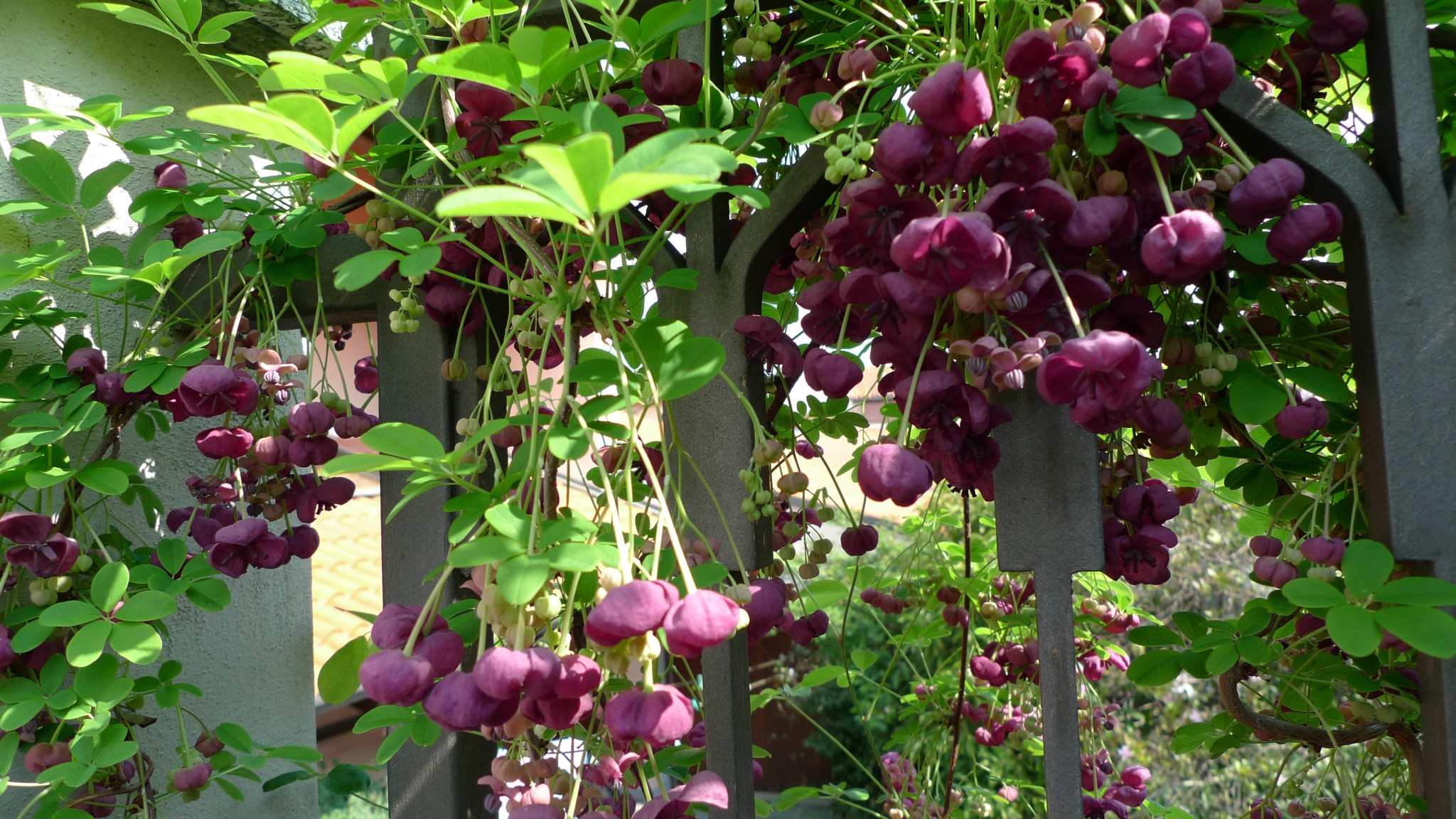
AKEBIA QUINATA Il Giardino Azienda Floricola
Akebia quinata is a dry vine stem of Akebia quinata (Thunb.) Decne. in the Lardizabalaceae Akebia Decne, which has antibacterial, anti-tumor, and diuretic properties. Calceolarioside B is a known effective component of Akebia quinata. Moreover, calceolarioside B is a phenylpropanoid, the current understanding of the molecular mechanisms of phenylpropanoid biosynthetic pathway is not clear. In.
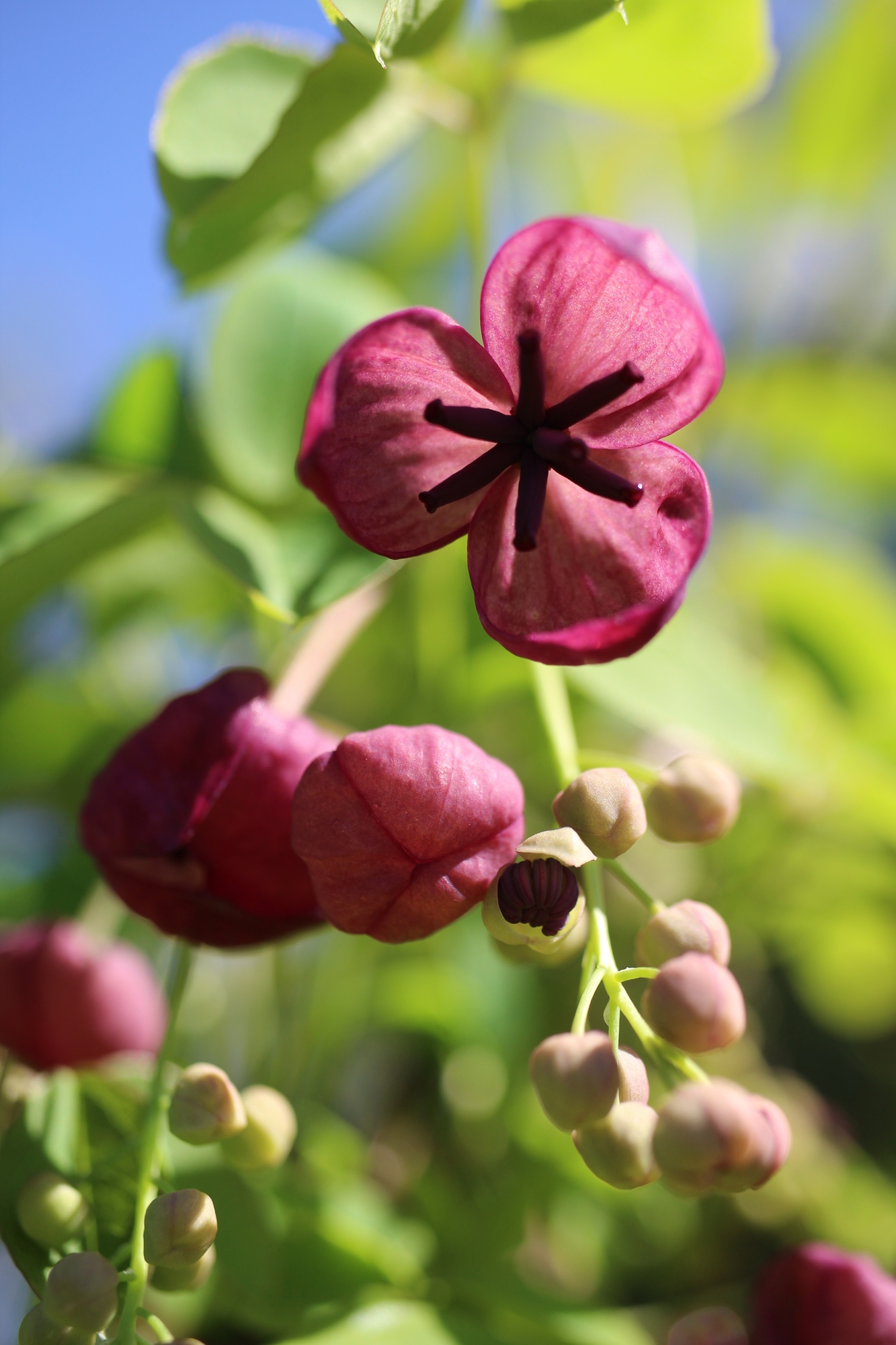
Akebia Quinata Caragh Nurseries
Chocolate vine (Akebia quinata) is consumed as a fruit and is also used in traditional medicine.In order to identify the bioactive components of A. quinata, a phytosterol glucoside stigmasterol-3-O-β-d-glucoside (1), three triterpenoids maslinic acid (2), scutellaric acid (3), and hederagenin (4), and three triterpenoidal saponins akebia saponin PA (5), hederacoside C (6), and.

Akebia Quinata 10 apr 2019
Akebia akebia, liaan Algemeen bij voorkeur snoeien na de bloei. Te krachtige of te sterke scheuten snoeien tijdens de zomerperiode (groeiperiode). jan. feb. mrt. apr. mei juni juli aug. sept. okt. nov. dec. Akebia's worden meestal aan horizontale draden aan de muur geleid. Plant ze op de juiste plek, akebia's worden niet graag verplant.
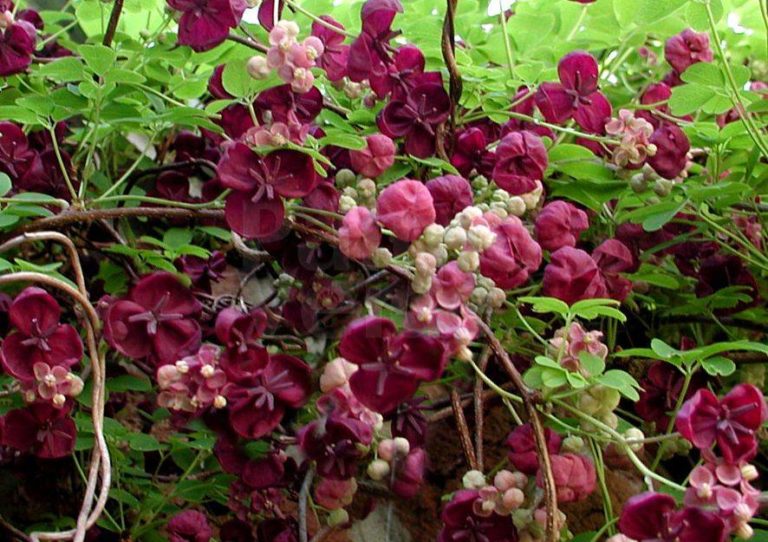
Schijnaugurk (Akebia quinata) Geveltuinbrigade
A fast-growing, invasive vine whose aggressiveness may at times approach that of Lonicera japonica, Akebia quinata is occasionally planted as an ornamental; it is of more botanical than horticultural interest. A greenish to whitish flowered variant, known from Asia, is cultivated in North America.
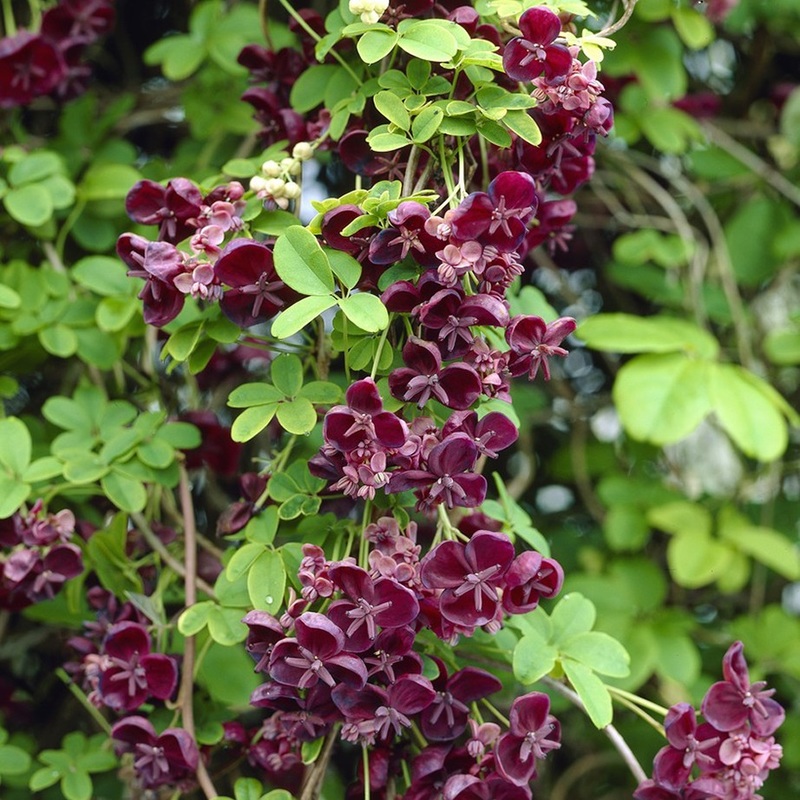
Akebia quinata Plant ID HCP
PMCID: PMC9360799 PMID: 35958221 The Akebia Genus as a Novel Forest Crop: A Review of Its Genetic Resources, Nutritional Components, Biosynthesis, and Biological Studies Ping Huang, 1 Fengqi Zang, 1 Changhong Li, 1 Furong Lin, 1 Dekui Zang, 2 Bin Li, 1 , * and Yongqi Zheng 1 , *
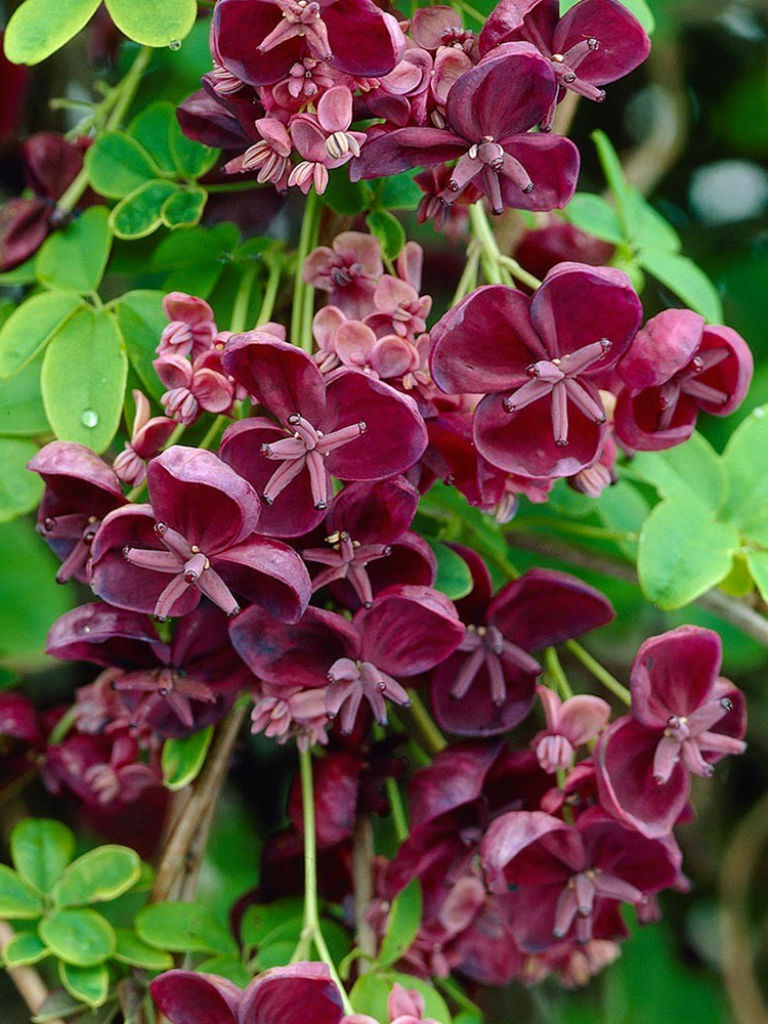
Akebia quinata (Chocolate Vine) World of Flowering Plants
Akebia quinata is a minor invasive species in the majority of the East Coast and was introduced in 1845 as an ornamental plant. [11] This is because the plant has no natural predators or diseases in North America and can grow as it pleases.

Akebia quinata Pot de 3 litres, pot haut, tipi Gamm Vert
Vigorously spreading, Akebia quinata (Chocolate Vine) is a dainty semi-evergreen, twining, woody vine with dangling racemes of small, wine-red flowers with a spicy, chocolate fragrance in spring. The blooms stand out against the bright green foliage of elliptic leaflets which becomes purple flushed in cold weather. If the summer is long and warm, the flowers will give way to a crop of unusual.

EF 12313149 Akebia, Chocolate Vine (Akebia quinata) Valentine
Propagate akebia via cuttings. Snip about 6 inches from new spring growth on an established vine and strip the leaves from the bottom half. Fill pots with moist potting mix and place the snipped stem, cut side down, into the mix. Firm the soil around the cutting and place it in a warm and humid spot for a couple of weeks.
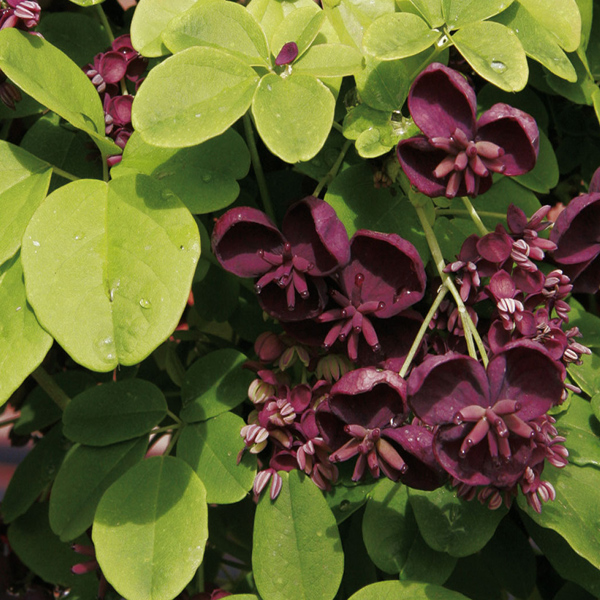
Akebia quinata Une grimpante aux grappes de fleurs violet pourpré
Akebia quinata, commonly known as chocolate vine, five-leaf chocolate vine, [1] or five-leaf akebia, is a shrub that is native to Japan, [2] China and Korea, commonly used as an ornamental / edible plant in the United States and Europe [3] In its native habitat, it is often found on hills, in hedges, on trees, along forest edges and streams, and.
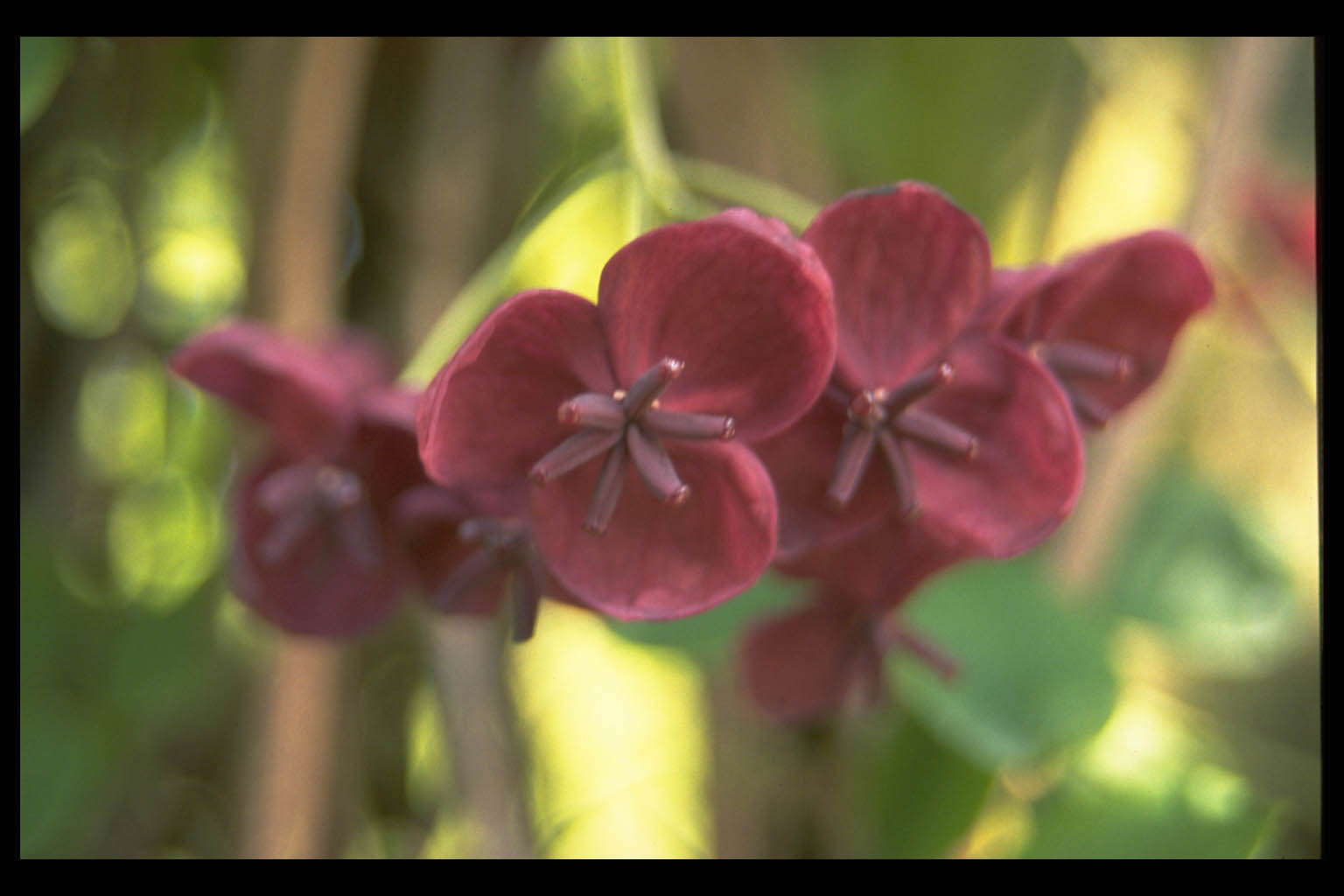
Akebia quinata Tuinseizoen
Akebia quinata is a reasonably hardy plant - when dormant, it can tolerate temperatures down to about -20 to -30°c. However, plants can be somewhat tender when young - new growth in spring can be damaged even by light frosts[11, 200, 1691 ]. Akebia quinata requires a well-drained moisture retentive soil [200 ].

Akebia Quinata / klimbes (semi groenblijvend) Klimplanten, Groenblijvend, Clematis
Description Chocolate vine, or five leaf akebia is deciduous to semi-evergreen twining woody vine in the Lardizabalaceae family. The genus name Akebia comes from the Japanese word for twining and qunitata is Latin for five which refers to the five parted compound leaves.

Akebia quinata Edible or Poisonous
No specimens are known from Rhode Island. A fast-growing, invasive vine whose aggressiveness may at times approach that of Lonicera japonica , Akebia quinata is occasionally planted as an ornamental; it is of more botanical than horticultural interest. A greenish to whitish flowered variant, known from Asia, is cultivated in North America.

Akebia Quinata Schijnaugurk Free photo on Pixabay
quinata Onderhoud Verzorging Indien nodig ondersteunen. Snoeien Na de bloei snoeien.

Tip 23 snoeikalender voor klimplanten als Akebia en passiebloem MAX Vandaag
Five-leaved akebia is a vigorous vine and may grow aggressively enough that it needs to be controlled. Akebia has invasive traits that enable it to spread aggressively. This plant is under observation and may be listed on official invasive species lists in the near future.

Akébie à cinq feuilles Akebia quinata La Forêt Féconde
In contrast to the stem and fruit of Akebia quinata, A. quinata leaves as a source rich in phenolic compounds with potentially beneficial pharmacological activities have been largely overlooked. To develop and use A. quinata leaves as a resource, we evaluated its potential as a cardiovascular-protective agent. Herein, we investigated the effects and potential mechanisms of A. quinata leaves.

Akebia quinata Plants, Planting flowers, Vines
De plant is volledig winterhard bij ons. De bloemen verschijnen tesamen met het nieuwe blad en staan in clusters bij elkaar en ruiken zoet, volgens sommigen ruiken ze naar chocolade. De bloemen hebben drie of vier sepalen en zijn mannelijk of vrouwelijk. De kleur van de soort 'A. quinata is violet.